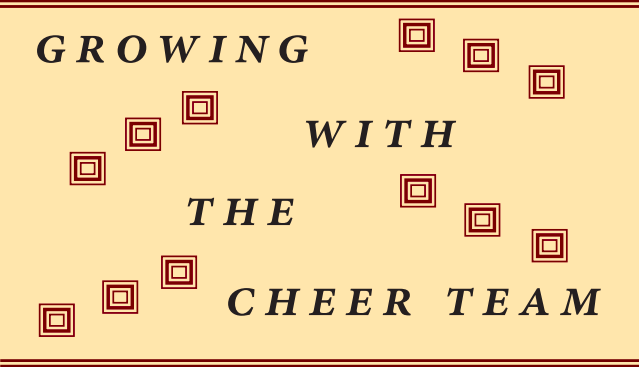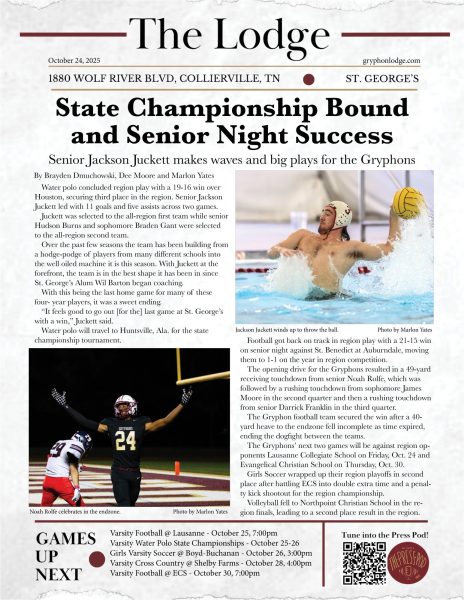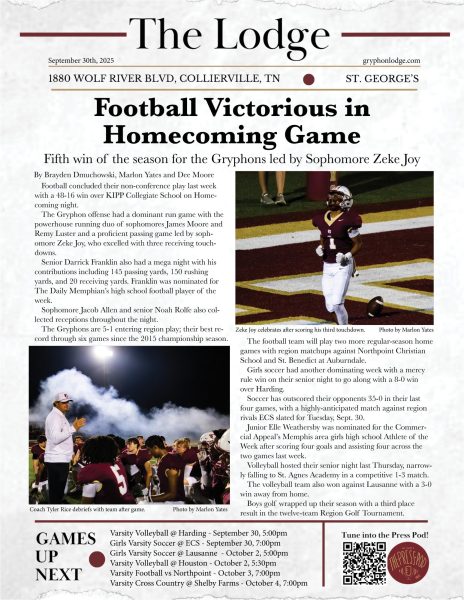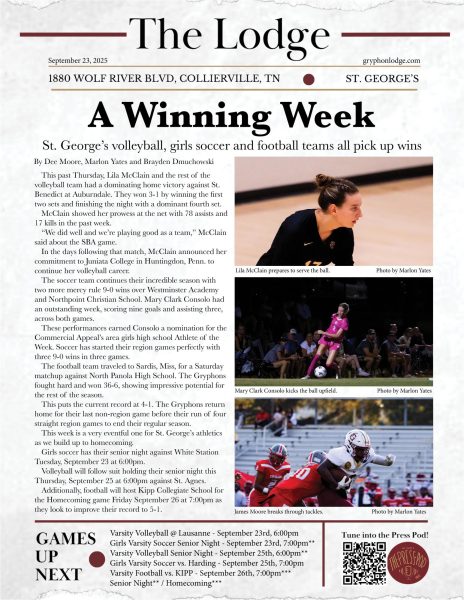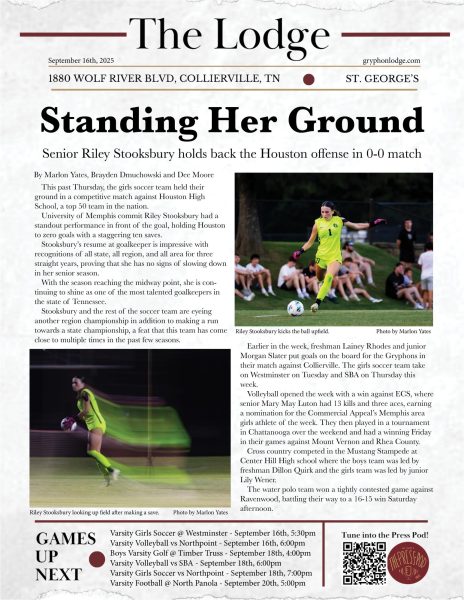Go Gryphs Go!
Growing with the cheer team
The St. George’s cheer team is no longer just on the sidelines. Just four years ago, the program was dying, but now with both a competitive and non-competitive team, it is more alive than ever. When senior Elizabeth Kilmurray joined the cheer team in 2018, the program was losing most of its traction.
“People weren’t interested in it, and it used to spark a lot of interest,” she said. “We used to have tryouts, and then it just became a sign-up.”
In 2019, the team was down to a meager 10 people. The following two years hardly saw an improvement, with 11 cheerleaders in 2020 and 12 in 2021.
Now St. George’s has added a competitive team to the cheer program. With the opportunity to compete against other cheer teams across the nation, interest
in the program was renewed, and the cheer team grew from 12 to 28 people – double the size that it was last year.
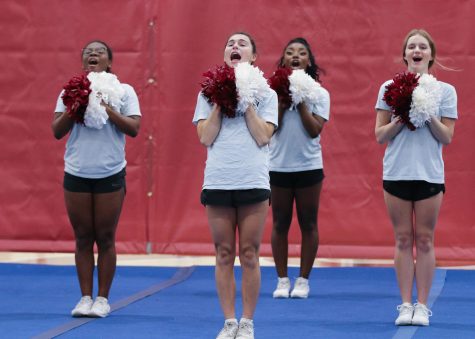
Sideline — or non-competitive — practices consist of the cheerleaders learning a multitude of cheers and stunts for Friday night football games. They have 40 cheers and six dances that they must memorize.
Competitive practices look a little different. They focus on perfecting one long routine instead of learning various short ones.
Varsity head cheer coach, Ashley Lott, explained the four different parts of the competitive routine.
“The competitive routine has four different parts: it’s a band chant, followed by a sideline cheer, followed by a traditional cheer, followed by a fight song, and it’s three minutes total,” said Coach Lott.
Freshman Kinsley Coleman said that the girls need lots of endurance to be able to perform for 3 minutes straight.
“We’re doing a 3-minute routine and we’re not calling any cheers; we’re doing dances, waving flags,” she said. Because of this, the girls run build-ups, which is when the girls sprint for 30 seconds to a minute, walk for a minute and then repeat for eight minutes “to build up [their] stamina,” according to Coleman.
As the cheer team strengthens their numbers, individual cheerleaders also see developments in their physical strength.
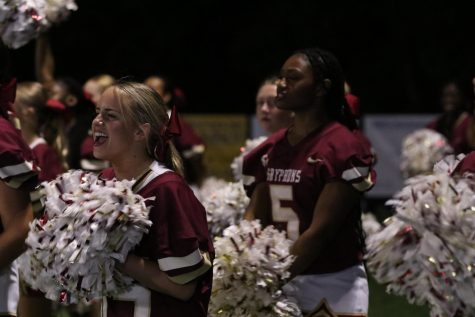
Coleman said, “I’ve gotten more flexible and I’ve definitely gotten a lot more muscle in my arms, just becoming stronger, and being able to pick up people that I thought I wouldn’t be able to pick up.”
Like Coleman, junior Olivia Lyons feels proud of the growth that she and the team have accomplished as well.
“We had a rocky start just because of the new learning curve. Going from a team of 11 people to 28 people- it’s a big change. It’s a change for everybody,” she remarked.
But Lyons is most proud that her confidence in her cheer abilities has grown.
“I remember in 9th grade I was so scared to cheer in front of the student section because there were a bunch of seniors and I was like ‘I don’t know what they’re going to think of me,’ and ‘If I do this I’ll look stupid,’” said Lyons. “But now I’m just realizing, it doesn’t matter. Nobody’s gonna remember this one moment from this one football game of this one cheerleader.”
On top of her renewed mindset, she sees herself as an advisor to the younger cheerleaders, especially because of the abundance of new recruits.
“I’m glad to be at a spot where I can advise other people and kind of calm them down and make them a better cheerleader.”
And with seventeen new girls added this year, she has plenty of new opportunities.
The sideline and competitive aspects have not only revitalized the cheer program, but also caused the cheerleaders to grow and flourish in new ways, which leaves everyone wondering: What’s next for the cheer team?


